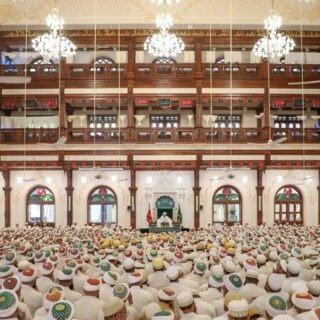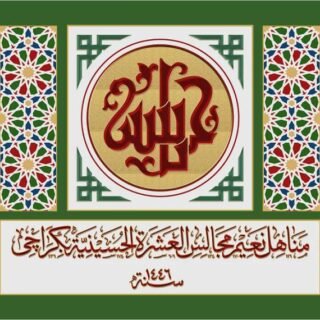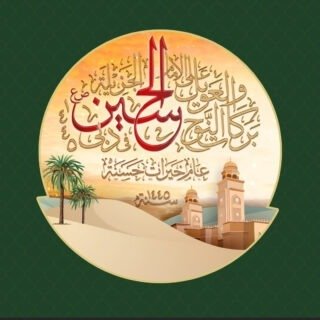Syedna Mufaddal Saifuddin Aqa’s TUS waaz mubarak during Ashara Mubaraka 1440 will center on the seats of da’wat within Yemen. On 2nd Moharramul Haram, Maula chronicled the establishment of Zi Jiblah, da’wat’s first capital in Yemen and the resting place of Maulatana Hurratul Maleka RA. Colloquially, Zi Jiblah is also known as ‘Madinat al-Nahrain,’ or the ‘City of the Two Rivers.’
Rivers are prominent geographical and cultural features throughout the world. They are the birthplace of prosperous ancient civilizations, such as Ancient Egypt along the Nile River, and Mesopotamia along the Tigris and Euphrates Rivers (present day Iraq). Rivers are harnessed for their sources of fresh water, which sustain livelihoods and agriculture; rivers are a form of transport and generators of electricity. In their most basic form, rivers are a source of water; metaphorically speaking, they are also sources of knowledge or ilm. Both water and knowledge are essential for our worldly and spiritual existence and survival.
All rivers have a source. The source of all knowledge flows from Hawze Kausar through Panjatan Paak AS, Aimmat Tahereen AS, and Doat Mutlaqeen RA. The knowledge that flows from the rivers of Kausar, and by extension, our Mawali Kiraam AS is so sweet, that, like water, it quenches our thirst in this world and the hereafter. The river of Kausar is said to be pure and luminescent, so full of noor, that it is whiter than milk.
Rivers flow throughout different continents, through different geographies and environments; some flow year-round, while others are only in existence during certain seasons. Some, such as the Nile and Amazon Rivers, are so long that they reach millions of people, while some are hidden away, deep underground. As such, their waters are not accessible to all. Mohabbat is the key through which mumineen access ilm. The ilm of Kausar and of Mawali Kiraam AS is for those who acknowledge, believe in, love, and stay united with their Maula; only mumineen within da’wat-ul-haq have the privilege to drink from Kausar and prosper.
On a trip to Canada, when Syedna Mohammed Burhanuddin RA visited Niagra Falls, he commented on the sheer force of the waterfall. He also pointed out that despite the force and volume of water within the fall itself, behind the waterfall were countless large stones that remained dry as a bone. Maula RA remembered Ashura, when Imam Husain AS asked Shimr LA whether he knew whose son and whose grandson Imam Husain AS was. Despite being so close to Imam Husain AS and knowing that he was the grandson of Nabi Mohammed and Ameerul Mumineen AS, he failed to receive the benefits of Kausar. This demonstrates that walayat and mohabbat, are keys to unlocking the waters of Kausar and the true knowledge. Mere proximity is not enough.
The essence of all ilm, and the convergence of all sources of knowledge is the zikr of Imam Husain AS. Imam Husain’s zikr is the meeting of two rivers: of the blood of Imam Husain AS, his Ahl Bayt and Ashaab; and of tears – the tears of mumineen who wept and continue to lament his ultimate sacrifice. Every day, every night, Syedna Mufaddal Saifuddin TUS strives to ensure that each mumin understands the significance of Imam Husain AS’s sacrifice and attain Jannat. Maula TUS shows us how to express noha wal aweel and to call out Ya Hussain with every maatam and every breath. We thrive and prosper in our pure mohabbat for him as he quenches the thirst in our souls with the sweet waters of Kausar.








